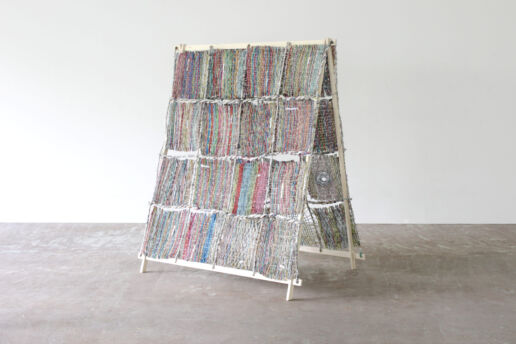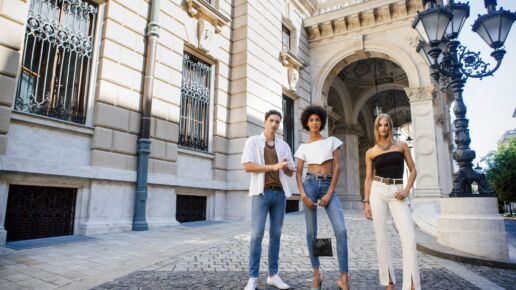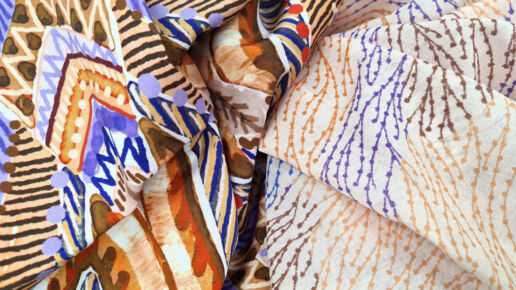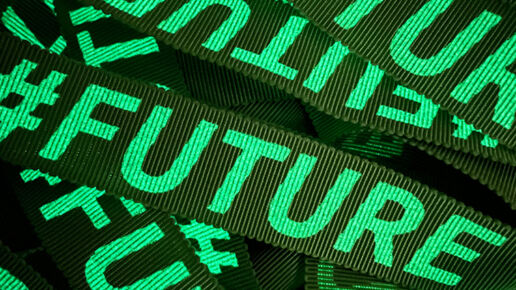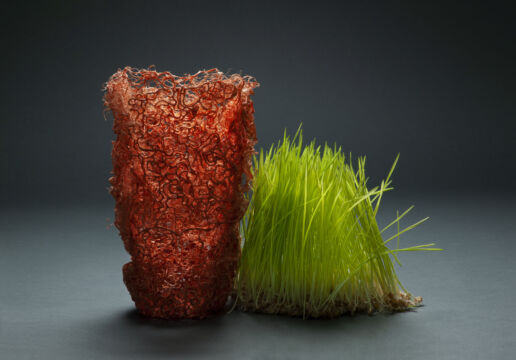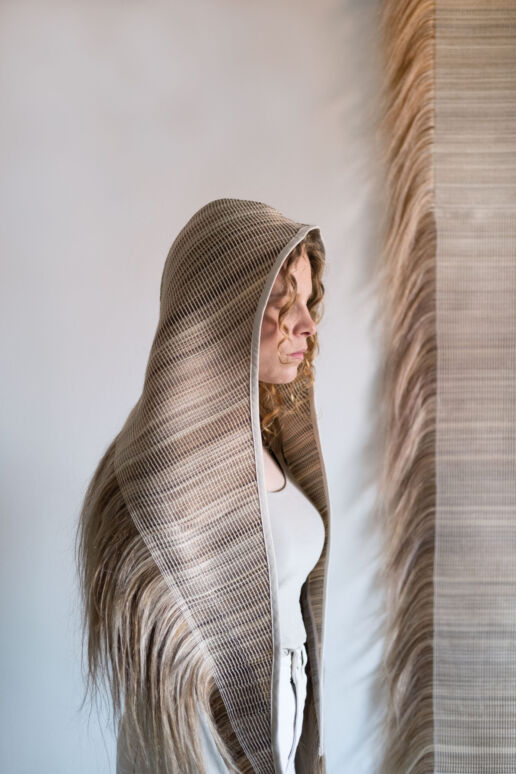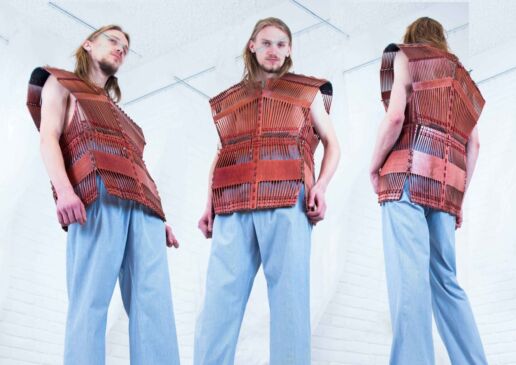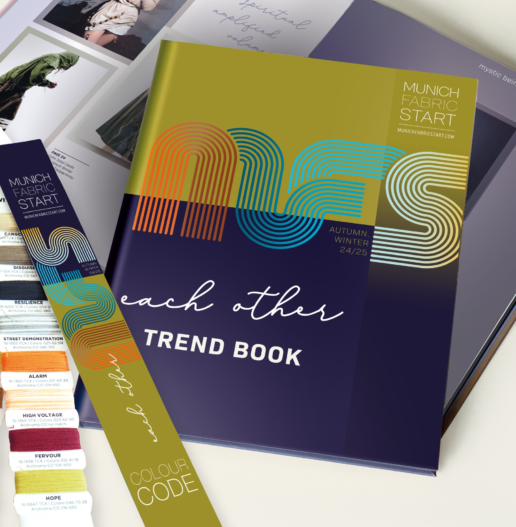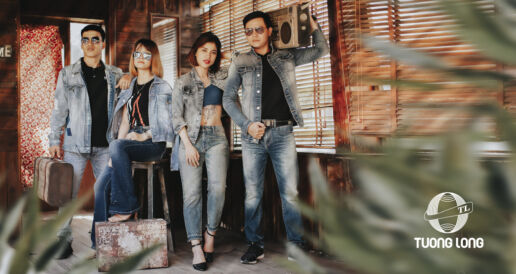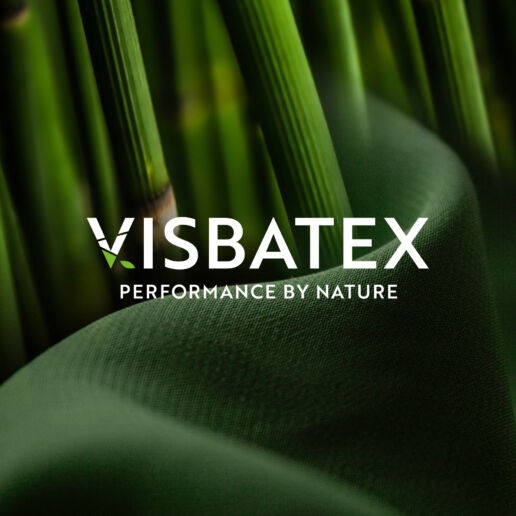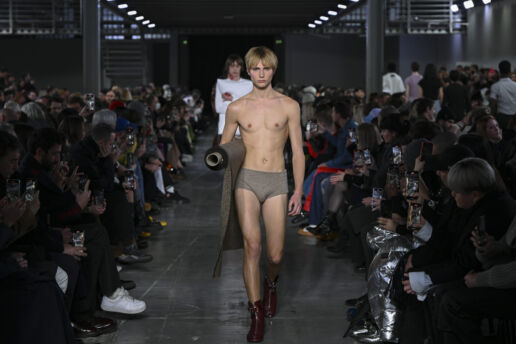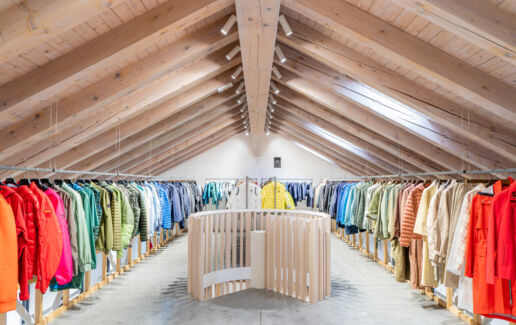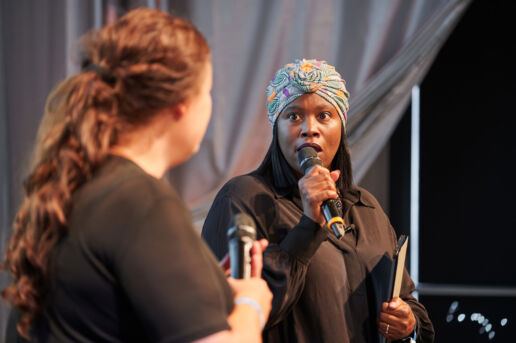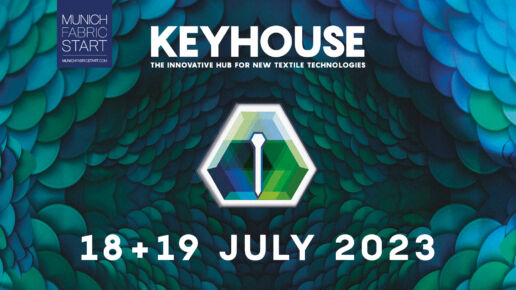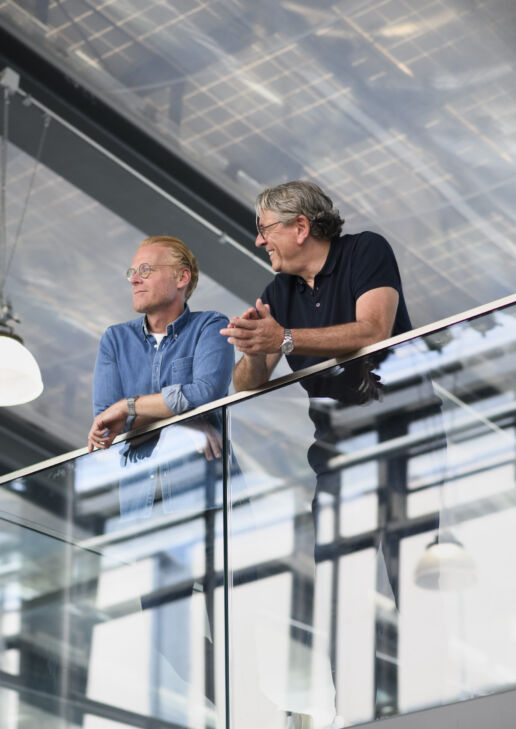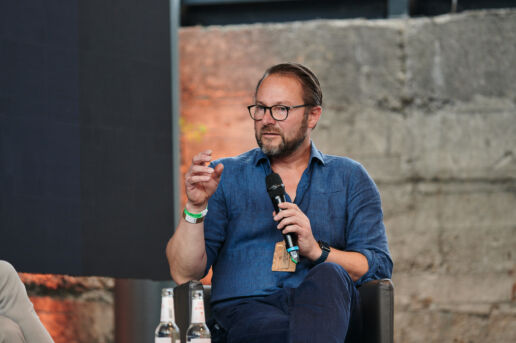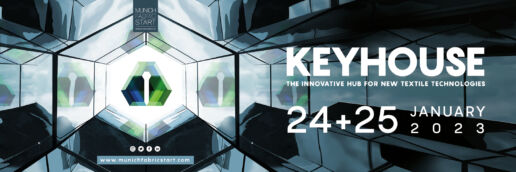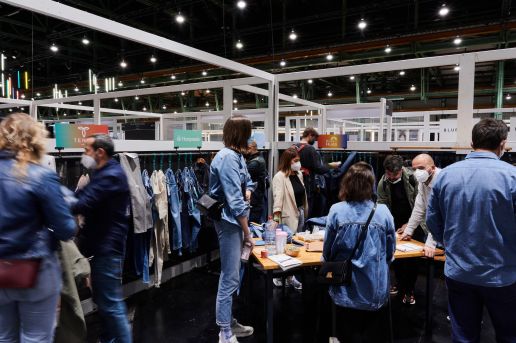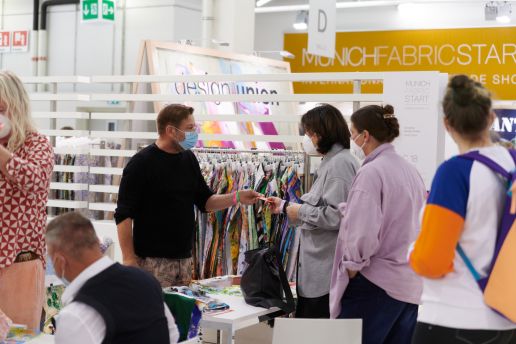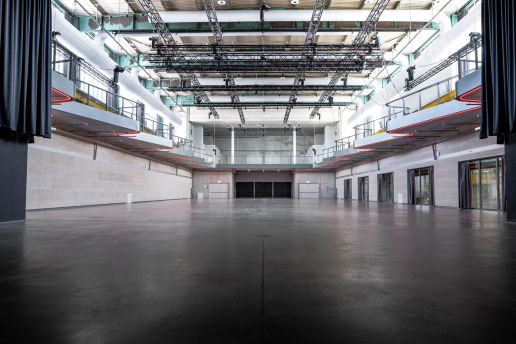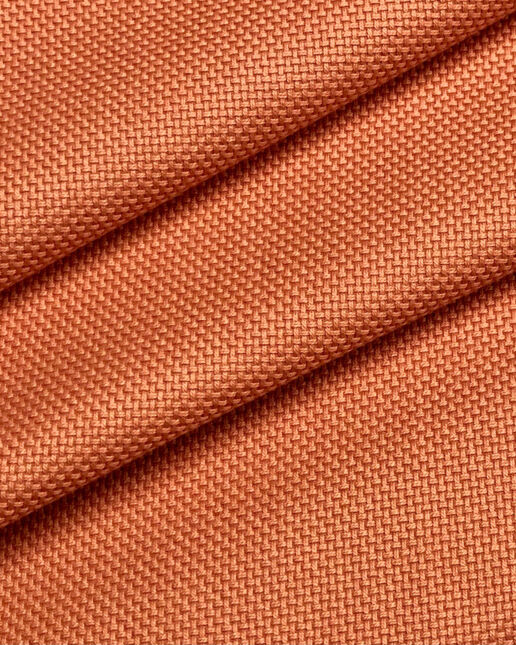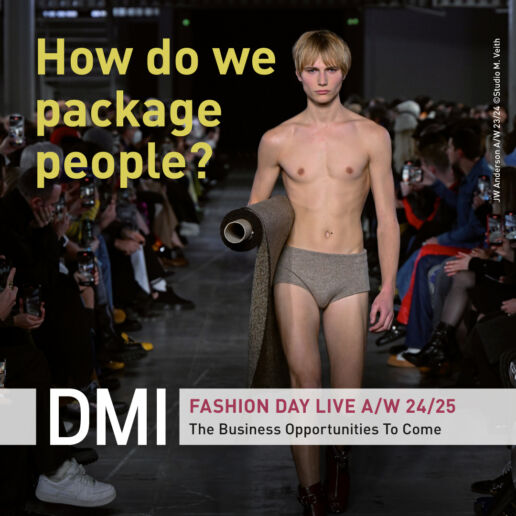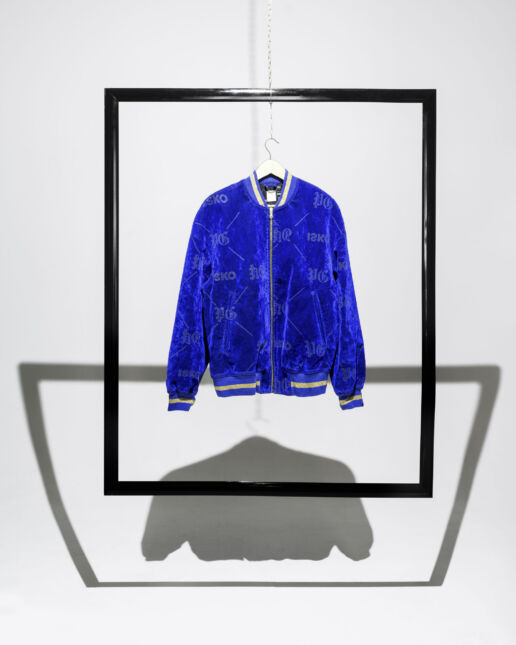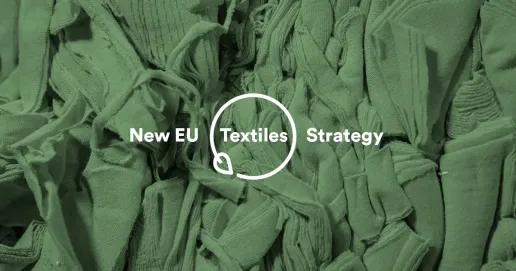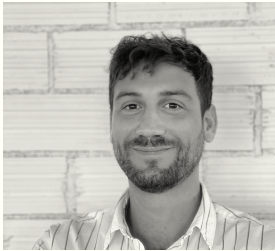Sustainability
Collective braiding - Sustainable innovations
A world where everything is becoming faster, more connected and more digital, endless possibilities are emerging. But why always strive for the new instead of continuing the traditional?
Designer Camille Champion has taken note of this development and, during a stay in South Korea, set out to revive interest in traditional craftsmanship.
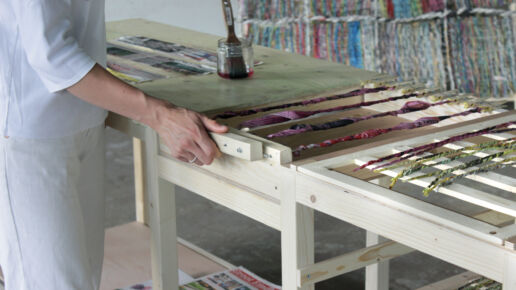
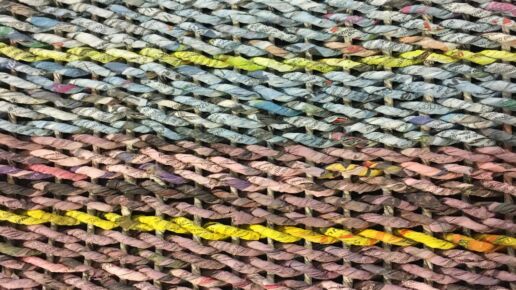
During her travels, she discovered the over 500-year-old technique of jiseung – a process dating back to the Joseon Dynasty that is used to make basketry from old books and paper waste. To do this, the paper is cut into thin strips and then corded. The cords can then be woven into containers such as baskets in various colours and patterns using different basketry techniques.
To save this cultural heritage from extinction, Camille Champion has launched the “Twist and Roll” project, bringing the reuse of newspaper waste to create new objects into a modern Western context: to pass on the craft, the designer has set up a series of workshops to give school children a connection to this tradition. She has designed a small weaving tutorial to teach children to make their own paper threads, weave them on a loom and then collectively build a tent-like structure for their classroom. Twist and Roll combines sustainability, creativity, craft skills and teamwork to show how the education system can benefit from crafts.
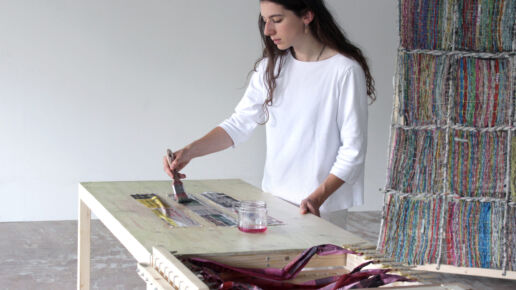
“In my opinion, giving the right tools to the new generations is very important.
Teaching them about materiality, history, or sustainability, will allow them to make the right choices for a better future.”
———————————————————————–
THIS MIGTH BE ALSO INTERESTING FOR YOU
BLUEZONE Signature Spring.Summer 25 – Part I
5. March 2024
IBIZABLUE is a bright and vibrant shade inspired bythe summer season. This unique colour allows fora range of washes that maintain their vitality, evenafter multiple wash cycles.
Fabric Trends Spring.Summer 25 – Part II
27. February 2024
It's safe to say that a return to joy and lightness is in the air in the world of fashion!
The latest accessory developments for Spring.Summer 25 – Part I
22. February 2024
A big part of the collection consists of natural fibers with super light ribbons in 100% cotton, a linen braid-effect ribbon and hemp ribbons for a sustainable-oriented collection.
Clothes that grow - Sustainable innovations
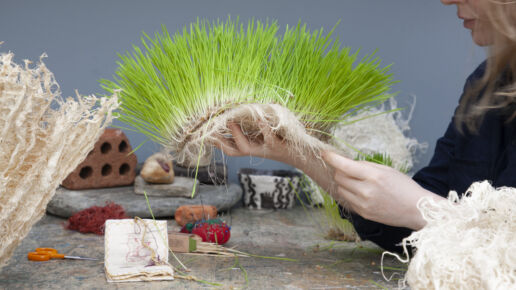
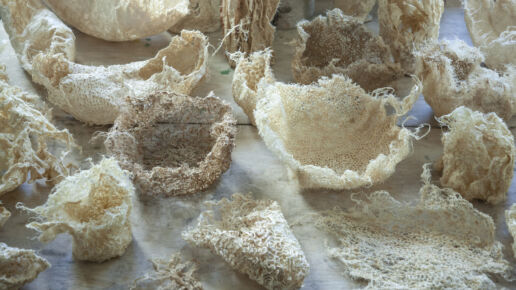
Nature as a 3D printer: material designer and underwater photographer Zena Holloway creates shapes and forms from wheat grass roots that grow in self-carved moulds made of beeswax. The supposed magic lasts for twelve days – the roots spread out horizontally or vertically and make their individual way through the wax templates. Depending on the shape of these, the roots either grow small in a confined space so that they become flat and compact, or if there is more space they can root deeper and three-dimensional shapes emerge. Immediately after harvesting, the roots are heavy and moist, after 24 hours they dry out and become light as a feather.
Each growth cycle produces a different result – all products are therefore individual pieces that can be further shaped by cutting, sewing, tearing or linking. For example, they can be used to create large, hanging structures, to shape vessels or to produce clothing and accessories. The wheatgrass roots also react particularly well to natural dyeing processes. In the name of sustainability: the water that accumulates and runs off during production can be reused and the leftover shoots, seeds or roots can be reused as animal feed. In addition, the dried root is a kind of botanical skeleton that binds carbon. Thus, the Rootful project demonstrates a micro-level approach to solving the complex problem of climate change.
“Growing artefacts from root is the simplest concept but captures the imagination of a wide audience.
I’m learning that root is a wonderful material to create fashion and art, serving to open up conversations around materiality and sustainability that inspire change.“
In the name of sustainability: the water that accumulates and runs off during production can be reused and the leftover shoots, seeds or roots can be reused as animal feed. In addition, the dried root is a kind of botanical skeleton that binds carbon.
Thus, the Rootful project demonstrates a micro-level approach to solving the complex problem of climate change.
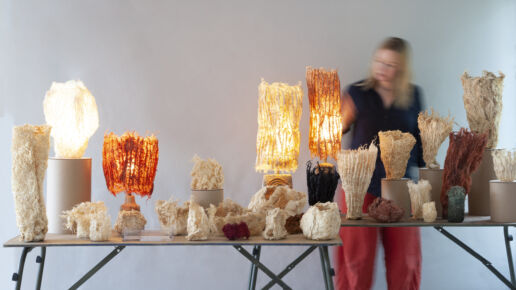
———————————————————————–
THAT MIGHT BE ALSO INTERESTING FOR YOU
BLUEZONE Signature Spring.Summer 25 – Part I
5. March 2024
IBIZABLUE is a bright and vibrant shade inspired bythe summer season. This unique colour allows fora range of washes that maintain their vitality, evenafter multiple wash cycles.
Fabric Trends Spring.Summer 25 – Part II
27. February 2024
It's safe to say that a return to joy and lightness is in the air in the world of fashion!
The latest accessory developments for Spring.Summer 25 – Part I
22. February 2024
A big part of the collection consists of natural fibers with super light ribbons in 100% cotton, a linen braid-effect ribbon and hemp ribbons for a sustainable-oriented collection.
Hairy affair - Sustainable Innovation
Hair creates identity – we dye it, style it, create new looks and expressions, and associate ourselves with cultural or social groups. It loses meaning and becomes rubbish to be discarded. In her hair project, Savine School gives hair a second life.
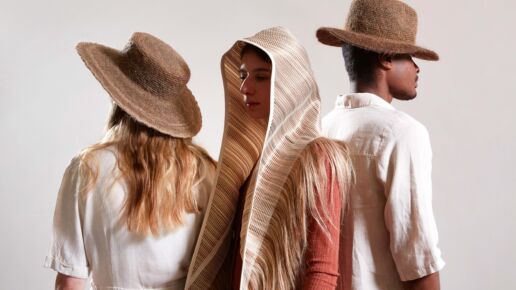
“Haar Haar focuses on the short switch from appreciating hair to feeling disgusted by it, even when it is the same material. It seeks to give a second life
to the material we treasured when it was on our head.“
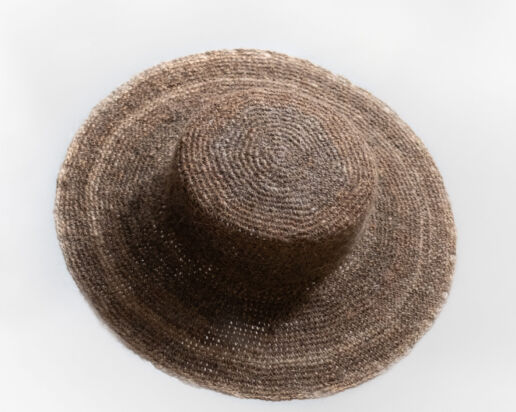
Every month, the textile designer and material researcher collects kilos of hair from various hair salons and extension studios and sorts them by colour and length. In the next step, she uses a machine to spin the hair together with wool into a uniform, flexible yarn. This yarn highlights the properties of both materials: the admixed wool offers the possibility to work with other tones beyond the hair colours, while the reflection of light on the hair provides a beautiful shimmer.
The designer uses the yarn to produce stylish accessories, such as crocheted hats – which at first glance have nothing to do with what ends up on the floor during a visit to the hairdresser. In this way, Savine Schoorl makes it clear that hair is a valuable resource and gives people the opportunity to discover the value of supposed waste in its second life cycle.
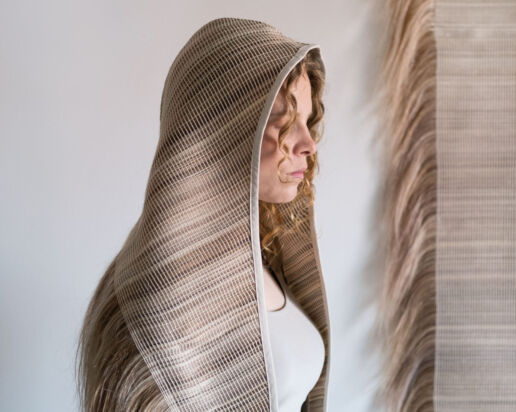
———————————————————————–
THIS MIGHT BE ALSO INTERESTING FOR YOU:
BLUEZONE Signature Spring.Summer 25 – Part I
5. March 2024
IBIZABLUE is a bright and vibrant shade inspired bythe summer season. This unique colour allows fora range of washes that maintain their vitality, evenafter multiple wash cycles.
Fabric Trends Spring.Summer 25 – Part II
27. February 2024
It's safe to say that a return to joy and lightness is in the air in the world of fashion!
The latest accessory developments for Spring.Summer 25 – Part I
22. February 2024
A big part of the collection consists of natural fibers with super light ribbons in 100% cotton, a linen braid-effect ribbon and hemp ribbons for a sustainable-oriented collection.
A Suit of Armour - Sustainable innovations
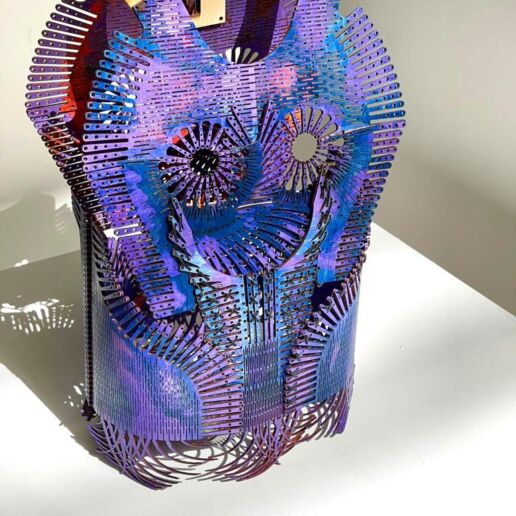
The name says it all: “Choub” means “wood” in Farsi – the material that designer Mehdi Mashayekhi draws on in his project Choub and uses innovative methods to create something new: Using digital fabrication, he has designed an abstract clothing collection for which he deconstructs the wood, giving the material new physical properties such as flexibility and stretchability.
The designer resorts to two methods: with topology optimisation, a computer-based process, he uses algorithmic models to determine the optimal shape of components in terms of load limits. The generative design method also creates new, powerful design options with the help of artificial intelligence. In this way, Mehdi Mashayekhi succeeds in solving complex requirements, distributing the weight of components and reducing manufacturing costs.
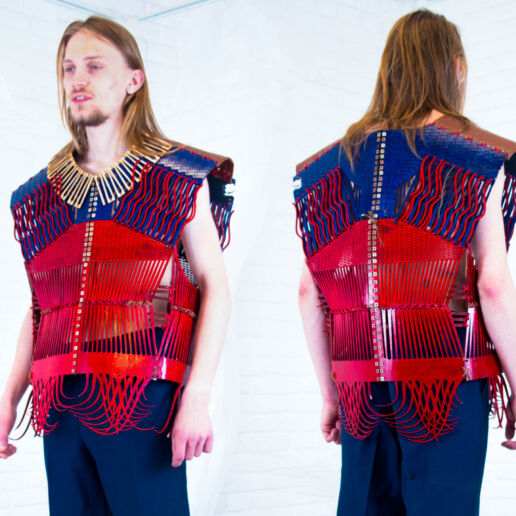
“Design is a glowing point in the cross-point between art and science, where reality meets vision.”
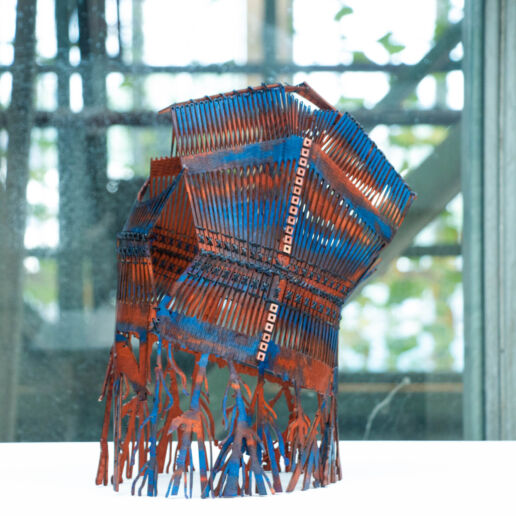
Innovative, unconventional, visionary: In the Choub project, 6mm thick plywood is used to create armour-like, portable constructions in which the wood loses its hardness and becomes flexible. Win-win: The designer optimises the use of materials in the design and at the same time provides a solution for upcycling waste. With the use of digital manufacturing, Mehdi Mashayekhi is helping to drive circularity and strengthen openness to materials and technical textiles.
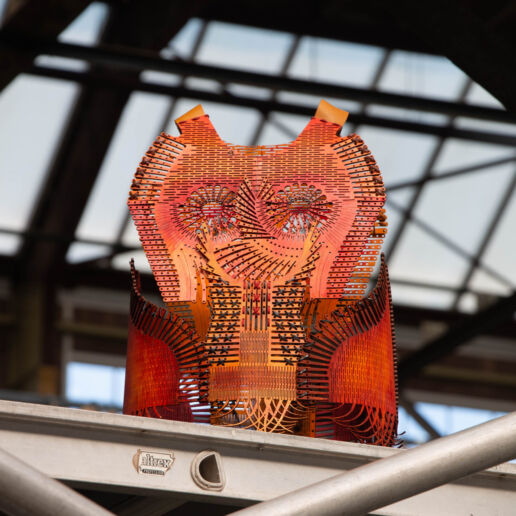
———————————————————————–
THIS MIGHT BE ALSO INTERESTING FOR YOU
BLUEZONE Signature Spring.Summer 25 – Part I
5. March 2024
IBIZABLUE is a bright and vibrant shade inspired bythe summer season. This unique colour allows fora range of washes that maintain their vitality, evenafter multiple wash cycles.
Fabric Trends Spring.Summer 25 – Part II
27. February 2024
It's safe to say that a return to joy and lightness is in the air in the world of fashion!
The latest accessory developments for Spring.Summer 25 – Part I
22. February 2024
A big part of the collection consists of natural fibers with super light ribbons in 100% cotton, a linen braid-effect ribbon and hemp ribbons for a sustainable-oriented collection.
Textile Innovations: Ready To Be Supercharged in 2023?
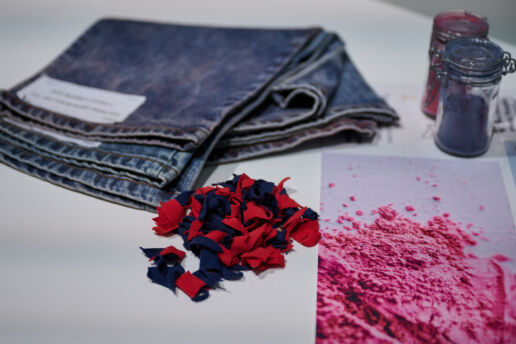
When it comes to textiles, one of the biggest challenges has been the industry taking on the responsibility to examine its processes. Although a necessary step, it is not an easy one for an industry built on foundations that date back to the mid-1700s industrial revolution. The good news is that with the help of new technology, the textiles industry is beginning to become better equipped to address most of the pain points in its supply chain, and in 2023 we may actually witness more innovations than ever being accelerated and scaled.
What To Expect in 2023
In the last few years, a shift in values has been redefining the textile industry. It is a shift driven by various technological solutions created to transform the global textile industry, so businesses can reach their sustainability and circularity goals and also understand the role that policy will most likely play in pushing value-driven fabrics forward.
So with innovation as its backbone, what can industry players seeking a more constructive view of the textile market expect in 2023?
Well, here is an overview of what is expected from the textiles space in 2023:
- There will be an acceleration and scaling of textile technologies that will position companies, small and midsize players, to explore further innovations that will help them align their business so they can adapt their practices and commit long-term.
- New fabrics will no longer survive but thrive as more research into sustainable materials and technologies increases and more brands continue to invest in sustainable and safer innovations.
- The textile industry in 2023 is expected to focus less on decadence and more on authenticity.
- We will witness the adoption of new business models that support sustainability initiatives — including supply chain traceability and the reduction of material usage.
- One of the growth drivers of the global textile market will be increasing demand for environmentally friendly and readily available natural fibres. In addition, more performance and technical fabrics will lean towards natural fibres.
- In 2023, more governments will start imposing stringent regulations. As a result, there will be more pressure on textile manufacturers to be less scattered and unorganised, especially when using toxic dyeing chemicals.
- The landscape will see an increase in market players whose USPs will be strongly driven by new technology and innovations. With a competitive edge, these material innovators bring new growth opportunities and strategies to the market.
- The textiles industry will continue to face materials, manufacturing and sustainability challenges in 2023. However, the good news is that the solutions that will continue to be explored in 2023 will be of a collaborative kind.
- Regarding future proofing manufacturing, 2023 strategies will push forward new research around new materials, digital manufacturing and sustainability for future textiles. In addition, textile manufacturers will create new supply chain models based on vertical integration, nearshoring, and small-batch production.
- In 2023, expect speed and agility to effectively tackle the challenges that slow down the growth of the textile and garment industry.
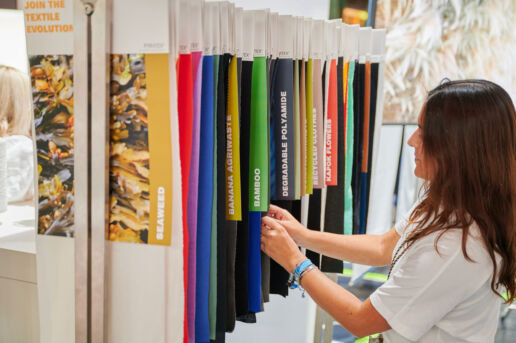
If you take away one thing, let it be this:
don’t be scared by the threat of new textile legislation distracted by the predicted digital shakedown or exhausted by the growing customer demands for sustainability.
Instead, ask yourself, if the future is promised to those who can ride through the challenges by embracing technology across their supply chain, can I afford to shy away from strategically sharpening my approach to the innovative dynamics driving the textile industry in 2023?
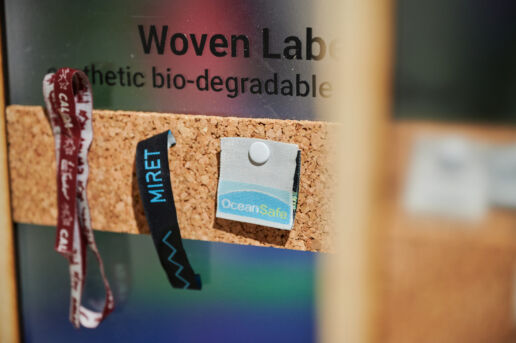
Are you interested in more in-depth facts and figures on the new textile economy?
Visit the Shape Innovate Lounge in H5 | 04 or attend the mini-lectures in the Keyhouse.
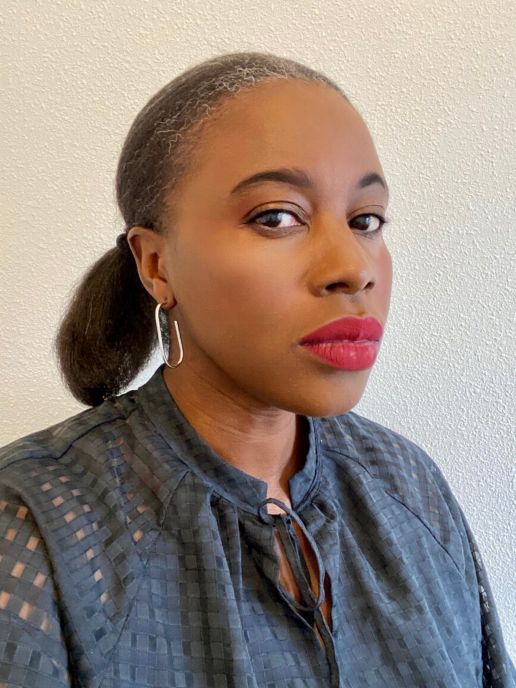
About the author
Founding editor-in-chief of Shape Innovate, Muchaneta has worked in the fashion industry for over 14 years. She is currently one of the leading influencers speaking and writing about the merger of fashion with technology and wearable technology.
Muchaneta ten Napel | m@shapeinnovate.com
This might be also interesting for you
Trend Preview for AUTUMN.WINTER 24/25
13. July 2023
Trendbook and Colour Code offer the ideal inspiration and information basis for the development of your Autumn.Winter 24/25 collection...
THE SOURCE 2023 – Autumn.Winter 24/25 – Part II
6. July 2023
Bold geometric jacquards, mini checks and 3D textures are telling a story about clean-cut contrasts in Union 3 Fashion’s Fall-Winter Collection.
Visbatex – Performance by nature
4. July 2023
Das Münchner Unternehmen entwickelt in seinem eigenen Nature Tech Lab High- Performance-Stoffe auf Basis von Bambusviskose (Anteil von mindestens 50 %).
CONNEXXION – SAAT MUNICH
29. June 2023
SAAT bedeutet im Indischen „gemeinsam“ und im Deutschen „was aus gesätem Samen entsteht“. So ist die Mode von SAAT eine harmonische Verknüpfung verschiedener Faktoren, die stets Neues hervorbringt.
HOW DO WE PACKAGE PEOPLE?
27. June 2023
This is what fashion is all about right now: taking people on a journey through time to phases of our lives and theirs when we, and everyone around us, were so much more carefree than we are today.
THE SOURCE 2023 – Autumn.Winter 24/25 – Part I
22. June 2023
M. I. Industries is engaged in innovative manufacturing with a vertically-integrated supply chain that straddles from greige fabric to apparels, providing end to end solutions to trusted partners across the globe.
High-tech connection meets low-tech reconnection
20. June 2023
Simultaneously, they are eager to explore avenues for improving the customer journey, sustainability aspects, sourcing or design. It entails broadening their scope of responsibilities and possibilities.
The Textile Industry: What to Expect in the Next Five Years
13. June 2023
The focus will be reducing hazardous chemicals, water, and energy in textile production. The industry will place greater emphasis on circular production methods and using recycled materials.
Discover the latest trends from KEYHOUSE 2023
11. June 2023
On more than 1,000 square metres you will find trend-setting Smart Textiles, Future Fabrics and new technologies - be it in terms of sustainability, circular economy, digitalisation, traceability, technology or finishing for the Autumn.Winter 24/25 season.
EACH OTHER
6. June 2023
each other - we believe that it will become the decisive factor influencing the trends of the coming season: namely the importance of personal contact, exchange and being there for each other, of listening attentively and looking closely.
"How do our actions contribute to the better?"
What is currently happening in the industry of innovators, transformers and forwardthinkers?
Different developments can be observed – especially when it comes to upcoming designers and creators, which is very interesting yet inspiring. Newcomers are about either entering the industry or creating their own one; furthermore, they all developed a very high professionalism in everything they do and how they present their ideas. Storytelling matters, that’s why we see crafts that concern and that communicate about thoughts, materials and backgrounds. They somehow reflect on the state of the industry and/or they question current systems. Just with the eye on possibilities, not to add critique. It is a friendly way to inspire.
You just said creators are “entering the industry or creating their own one”. What do you mean by that?
Well, actually right as I say. Either people and ideas enter an industry OR they create an industry. Entering means that designers or creators just fit into an industry and can get part of it or they can develop their own techniques and make it scalable and somehow create their own. Let me give you an example: WINT Design Lab discovered a new material and also discovered how to use it in order to make it relevant for the market. Either they can enter the industry OR if they find possibilities to cover all the needs within the supply chain and develop the machines to produce in a big scale, they could go big and just create their own industry.

Simon Angel
What other developments can you identify?
Back in the days, let’s say about five years ago, there was mainly one person behind a new idea that was working within a tiny studio. Compared to that, everything is so much more professional: being a material designer, you can have a studio and work with employees who assist. That is nowadays how designers get ready to present their idea to the market. You need people who bridge the gap between the studio and the market. I personally recognize a huge potential in this point of professionalism, because people get ready to connect – young designers now offer representative samples and get in touch with the industry on a very professional level. Newcomers inspire the industry.

What sounds very interesting. What do the newcomers do differently?
Things that impress the industry: crafts that concern and communicate. The designers and their innovations want to tell us stories: it’s about the material, systems (and old behaviours) but also the designs. We can get glimpses into cultural backgrounds, different techniques, social aspects and so much more. For example, the project “Rootful” by Zena Holloway and the project “Choub” by Mehdi Mashayekhi show off how to create a material out of seagrass or wood with the implemented idea to use the finished garment or the designs as tools to communicate.
That’s a positive development, isn’t it?
Yes, it is. But one thing should not be forgotten: we are in the middle of a delicate discussion on the urgency of creating, within that everybody has to
put their own position into a fresh perspective. I sometimes find it important to take a bit of a distance and ask rhetorically questions like: So what? We are
leaving the era of RE-thinking we are entering an era of PRE-thinking. We can challenge ourselves in critical self-reflection with a future smile.
We should not design just to be a designer or cook just for the sake of being a chef. We should not create just to be a creator. We should not just buy new stuff, only for the sake of being a consumer. Way more, we should cook when people need food, design when designs are not good enough and create when the world needs a new product. Let’s stay critical and ask ourselves over and over again: how do our actions contribute to the better?
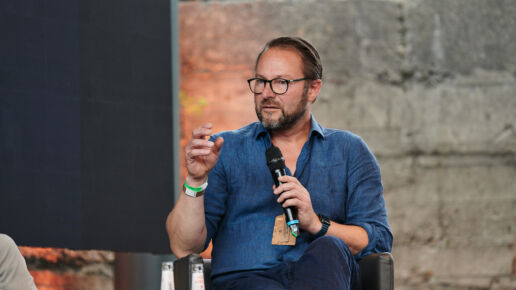
EXPOLRE AND GET INSPIRTED AT MUNICH FABRIC START
IN THE SUSTAINABLE INNOVATIONS AREA AT KEYHOUSE – H5!
Discover more industry-changing innovations at our upcoming trade shows:
Meet Saitex - the vertical Vietnamese Denim Entity
Global jeans manufacturer Saitex is going vertical as it officially announces the opening of its first denim fabric making mill in Vietnam. The new 100,000 square meter facility is located 40 minutes from its cut & sew factory near Ho Chi Minh City where 18,000 pairs of jeans are made on average per day.
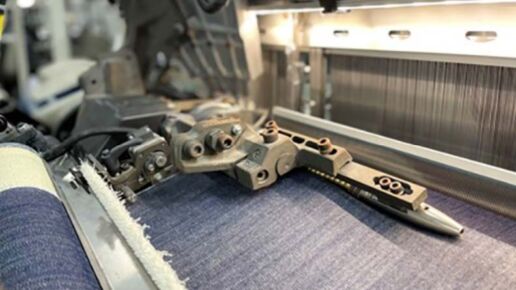
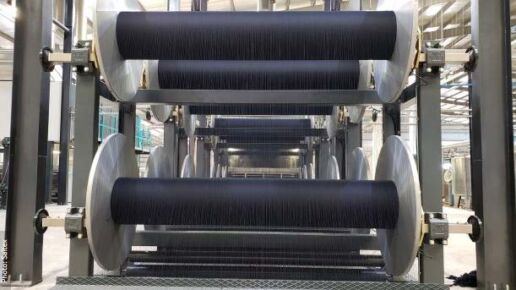
The new mill covers all operations from yarn spinning to weaving and to fabric dyeing and finishing. Saitex has announced it will produce 2 million meters of fabric per month, or 24 million yearly, and some 750 tonnes of yarn per month. These new operations have created 630 new jobs and the company says it will employ 1,000 at full capacity. As it has already done at its cut & sew factory, 20% of the jobs will be filled by people with disabilities.
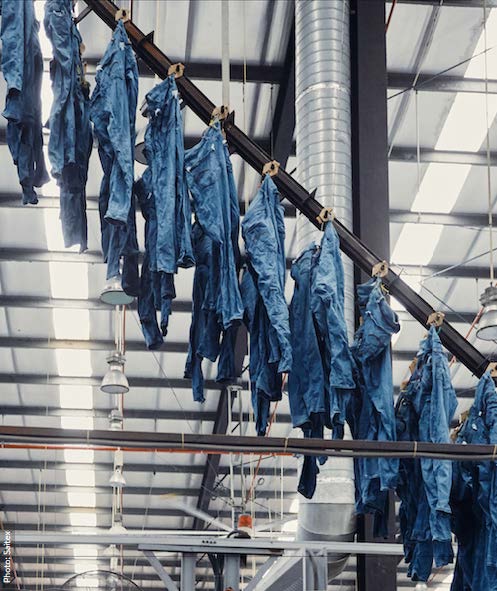
Like Saitex’s “Factory of the Future” in Los Angeles, CA, the new facility incorporates the latest and lowest impact technologies. The mill is equipped to produce yarns in pure cotton or in blends in dual-core, multiple-core and SiroSPUN technologies.
For indigo dyeing, Saitex has installed the Smart Indigo system that pre-reduces indigo via an electrochemical process. This, the company says, leads to lower CO2 emissions by 90%, requires 70% less energy and 30% less water, with oxygen as the only product released. Karl Mayer rope dyeing machines lead to further environmental savings, thanks to fewer dye bathes, and a 30% reduction in indigo and chemical usage.
Other eco-responsible features at the new site include LEED Gold Certified materials for the building, 15,000 solar panels, greywater recycling and rainwater collection systems. A vegetable garden covers 40% of the total site to feed workers and local communities. Saitex says it has also planted 6,000 trees in the industrial park, and has offset its carbon emissions by planting 50 hectares of mangroves in Vietnam, as part of its plan to contribute to climate neutrality by 2025.
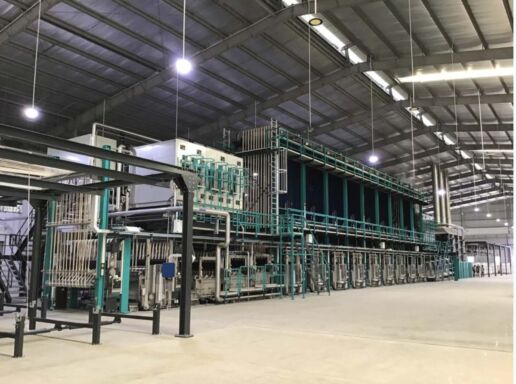

“It has been our long-term vision to close the loop on our operations. With the opening of the mill and the upcoming launch of our textile upcycling facility, Stelapop, our vision will be complete. We will close the circle, allowing us to provide unprecedented transparency in denim production and the ability to turn apparel and textile waste into high-quality goods. Our target is to become the most sustainable fabric mill on the planet making fully circular production possible for our customers.”
Sanjeev Bahl, CEO und Gründer von Saitex
This might be also interessting for you:
CONNEXXION – SAAT MUNICH
29. June 2023
SAAT bedeutet im Indischen „gemeinsam“ und im Deutschen „was aus gesätem Samen entsteht“. So ist die Mode von SAAT eine harmonische Verknüpfung verschiedener Faktoren, die stets Neues hervorbringt.
HOW DO WE PACKAGE PEOPLE?
27. June 2023
This is what fashion is all about right now: taking people on a journey through time to phases of our lives and theirs when we, and everyone around us, were so much more carefree than we are today.
THE SOURCE 2023 – Autumn.Winter 24/25 – Part I
22. June 2023
M. I. Industries is engaged in innovative manufacturing with a vertically-integrated supply chain that straddles from greige fabric to apparels, providing end to end solutions to trusted partners across the globe.
High-tech connection meets low-tech reconnection
20. June 2023
Simultaneously, they are eager to explore avenues for improving the customer journey, sustainability aspects, sourcing or design. It entails broadening their scope of responsibilities and possibilities.
The Textile Industry: What to Expect in the Next Five Years
13. June 2023
The focus will be reducing hazardous chemicals, water, and energy in textile production. The industry will place greater emphasis on circular production methods and using recycled materials.
Discover the latest trends from KEYHOUSE 2023
11. June 2023
On more than 1,000 square metres you will find trend-setting Smart Textiles, Future Fabrics and new technologies - be it in terms of sustainability, circular economy, digitalisation, traceability, technology or finishing for the Autumn.Winter 24/25 season.
EACH OTHER
6. June 2023
each other - we believe that it will become the decisive factor influencing the trends of the coming season: namely the importance of personal contact, exchange and being there for each other, of listening attentively and looking closely.
Fabrics Spring.Summer 24 VIII
30. May 2023
The new collectionfeatures colourful micro, geometrical designs onone side and organic, abstract shapes on the other.
DMI FASHION DAY LIVE in Munich
25. May 2023
FASHION DAYs - The date (July 17, 2023) and the location (MOC Munich) offer guests the opportunity to "kill two birds with one stone", namely, to visit MUNIC FABRIC START and the DMI FASHION DAY LIVE on the afternoon before.lappe zu schlagen“, nämlich die MUNIC FABRIC START zu besuchen und am Nachmittag davor den DMI FASHION DAY LIVE.
BLUEZONE DISCOVERY – Part III
23. May 2023
Ctrl+Z, fabricsare made from a pure blend of recycled cottonand polyester with regenerated cellulosic fibers:
The New EU Textiles Strategy: 15 Things You Need To Know
The New EU Textiles Strategy: 15 Things You Need To Know
A contribution of Muchaneta ten Napel, Founding Editor-in-Chief FashNerd.com
The fashion industry produces 92 million tonnes of waste. It is also responsible for 10% of the world’s carbon emissions. The ugly truth is that the way that the fashion industry does business is making an unsustainable impact on natural resources and the environment at each stage of the supply chain.
So what can be done to minimise an industry-wide problem’s carbon and environmental footprints? Well, this is where the new EU Strategy for Sustainable and Circular Textiles comes into play.
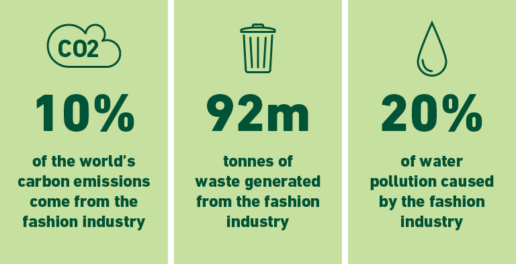

Is It Empowering the Green Transition?
More than just another set of rigid rules, the new EU textiles strategy is driven to address the need for businesses to take responsibility and act to minimise their carbon and environmental footprints. Proposed by the EU Commission, the plan has been set up to help the EU shift to a circular economy that can tackle fast fashion, textile waste and the destruction of unsold textiles. The strategy also aims to encourage businesses to participate actively in the co-creation process through their commitments to circularity and circular business models.
As part of the EU Green Deal, the strategy proposes to make sustainable products “the norm in the EU.” Pushing forward the idea that all production fully respects social rights, the plan also calls on companies to make textiles more durable, repairable, reusable and recyclable.
Bringing attention to a product’s lifecycle, the strategy focuses on design through to end-of-life. The agenda is to kickstart actions that ensure that by 2030 textile products placed on the EU market will be more eco-friendly and long-lasting.
With so much change promised, the Commission’s proposal of new rules can be complex for some to unpack. So here are ten things you need to know about the new EU Strategy for Sustainable and Circular Textiles.
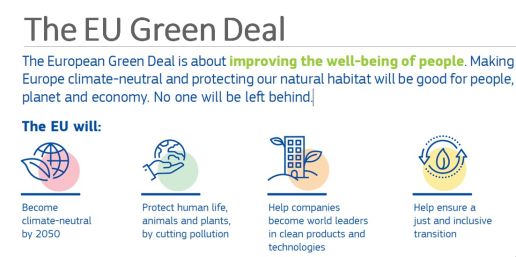
15 Things you need to know
- The new strategy is part of a much broader package, including as many as 16 new legislative actions and other policies that will directly impact the textile value chain.
- Create a model of thriving green and digital transition in manufacturing.
- The strategy will require manufacturers to give consumers more information on how to reuse, repair and recycle clothing.
- The goal is to phase out fast fashion and have more businesses commit to business models that allow for the reuse and repair of products to be widely available.
- In the textile sector, the strategy hopes producers will take responsibility for their products along the value chain, including when they become waste.
- Promoting the circular textiles ecosystem, the EU textiles strategy aims to support and accompany the textiles ecosystem throughout its transformative journey.
- By supporting innovative fibre-to-fibre recycling, the plan is to reduce, to a minimum, the incineration and landfilling of textile waste.
- Solutions and measures include more precise information, a Digital Product Passport and a mandatory EU extended producer responsibility scheme.
- The strategy highlights the need for accuracy regarding green claims by proposing new consumer rights and a ban on greenwashing.
- Reverse overproduction and overconsumption, and discourage the destruction of unsold or returned textiles.
- Propose mandatory Extended Producer Responsibility for textiles with eco- modulation of fees.
- Address the unintentional release of microplastics from synthetic textiles.
- Restrict the export of textile waste and promote sustainable textiles globally.
- Incentivise circular business models, including reuse and repair services.
- Adopt favourable taxation measures for the reuse and repair sector. Lastly, the new EU Strategy for Sustainable and Circular Textiles end game is to make the EU market more friendly to the environment, circular, and energy-efficient and bring balance back to global supply chains. So to conclude, yes, the EU textiles sustainability strategy is very ambitious, but this is why it is critical that it is implemented correctly.
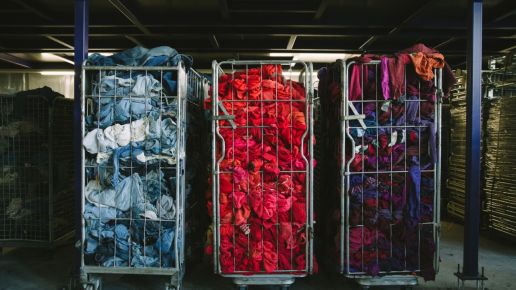
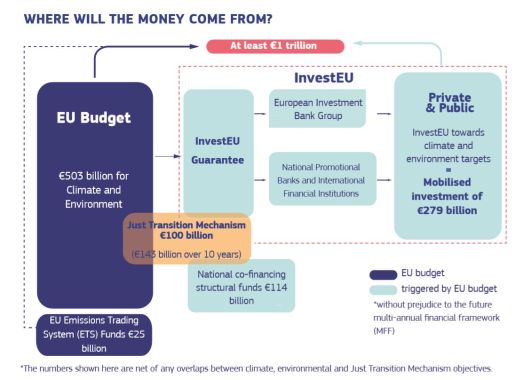
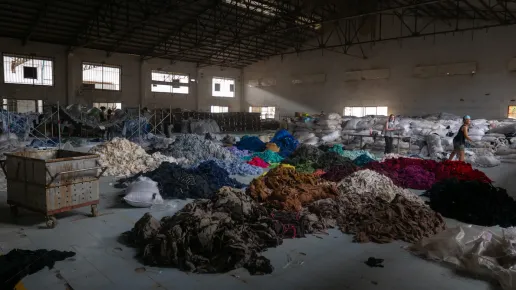
Are you interested in more in-depth facts and figures of the new textile economy?
Visit the FashNerd.com Lounge at H5 | 28 or join their mini lectures Keyhouse.

About the author
Founding editor-in-chief of FashNerd.com, Muchaneta has worked in the fashion industry for over 14 years. She is currently one of the leading influencers speaking and writing about the merger of fashion with technology and wearable technology.
Muchaneta ten Napel | editor@fashnerd.com
THIS MIGHT BE ALSO INTERESTING FOR YOU
Trend Preview for AUTUMN.WINTER 24/25
13. July 2023
Trendbook and Colour Code offer the ideal inspiration and information basis for the development of your Autumn.Winter 24/25 collection...
THE SOURCE 2023 – Autumn.Winter 24/25 – Part II
6. July 2023
Bold geometric jacquards, mini checks and 3D textures are telling a story about clean-cut contrasts in Union 3 Fashion’s Fall-Winter Collection.
Visbatex – Performance by nature
4. July 2023
Das Münchner Unternehmen entwickelt in seinem eigenen Nature Tech Lab High- Performance-Stoffe auf Basis von Bambusviskose (Anteil von mindestens 50 %).
CONNEXXION – SAAT MUNICH
29. June 2023
SAAT bedeutet im Indischen „gemeinsam“ und im Deutschen „was aus gesätem Samen entsteht“. So ist die Mode von SAAT eine harmonische Verknüpfung verschiedener Faktoren, die stets Neues hervorbringt.
HOW DO WE PACKAGE PEOPLE?
27. June 2023
This is what fashion is all about right now: taking people on a journey through time to phases of our lives and theirs when we, and everyone around us, were so much more carefree than we are today.
THE SOURCE 2023 – Autumn.Winter 24/25 – Part I
22. June 2023
M. I. Industries is engaged in innovative manufacturing with a vertically-integrated supply chain that straddles from greige fabric to apparels, providing end to end solutions to trusted partners across the globe.
High-tech connection meets low-tech reconnection
20. June 2023
Simultaneously, they are eager to explore avenues for improving the customer journey, sustainability aspects, sourcing or design. It entails broadening their scope of responsibilities and possibilities.
The Textile Industry: What to Expect in the Next Five Years
13. June 2023
The focus will be reducing hazardous chemicals, water, and energy in textile production. The industry will place greater emphasis on circular production methods and using recycled materials.
Discover the latest trends from KEYHOUSE 2023
11. June 2023
On more than 1,000 square metres you will find trend-setting Smart Textiles, Future Fabrics and new technologies - be it in terms of sustainability, circular economy, digitalisation, traceability, technology or finishing for the Autumn.Winter 24/25 season.
EACH OTHER
6. June 2023
each other - we believe that it will become the decisive factor influencing the trends of the coming season: namely the importance of personal contact, exchange and being there for each other, of listening attentively and looking closely.
Vifrex Studio - Experts in Fabrics Design and Production from Barcelona
This season we are profiling some of the exhibitors showcasing at MUNICH FABRIC START 2022. We are excited to present you VIFREX STUDIO.
With years of professional experience in the textile sector and the main Spanish retail group, Joan Vilalta founded VIFREX STUDIO in 2017. Located in Barcelona and Istanbul, the company covered all the needs from design, commercial area, planning and quality control, expanding to the vertical production of garments.
Known for the design, production and sale of fabrics, we decided to take a moment with Luigi Maria Cialdini of VIFREX STUDIO to discuss the company’s drive, challenges and newest developments.
You are specialists in textile design; what services does VIFREX Studio offer?
We are a team of fabrics designers and textile engineering. We provide our customers with a personal fabric designer that can help and assist in all the developments, proposing trends and mood boards for their needs.
What would you say your strengths are?
Quick development process starting from trends, colours, and base qualities proposals.
When it comes to sustainability, can you elaborate on your green strategies so far?
All our items meet the highest sustainable standards. We possess all the certifications like OCS, GRS, BCI, and CARE FOR WATER. More than 90% of our last year’s productions were sustainable.
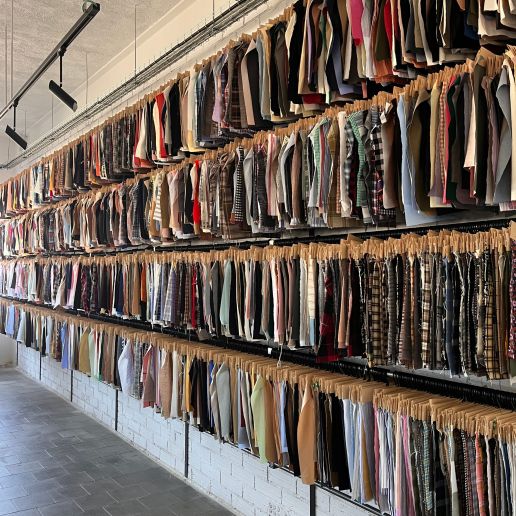
You have a garment production base in Turkey; what do you do differently?
We assist our customers in the entire development process. We can produce for any size Brand, from the big retail chains to the slow fashion brands.
SLCP audited your fabric, and you are JOIN LIFE certified; how important do you think certification is in the Textile industry?
More than 90% of our last year’s productions were sustainable, and Join Life. We believe that the textile industry needs to be committed to the highest social value to improve the earth’s condition.
How important is it to be unique yet still have a recognizable factor in your work?
Being unique and quirky is the key to this business s success. We continually experiment with new colours, bases, and constructions to look attractive. The creative part is where we invest most of our time and effort. We are surrounded by a team of experienced designers always aiming for the newest and best product construction/combinations. Our motto is: YOU ARE THE REASON WE CREATE FABRICS.
Did you face challenges during the pandemic? And how did you deal with them?
We had a lot of time to think and reshape our business model. We concluded that being unique and attractive is the key.
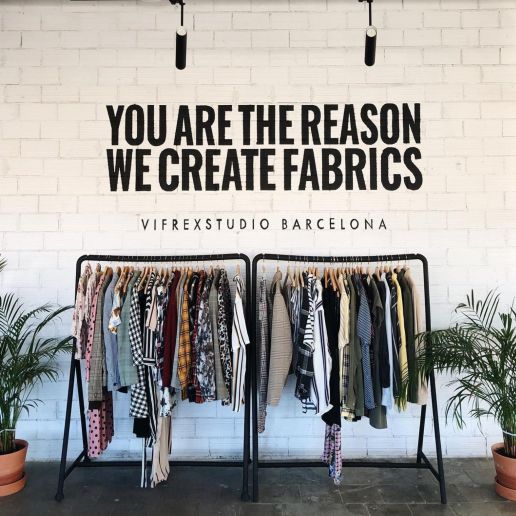
Is it hard to stay innovative?
Not at all; innovation and creation have always been our goals since we started in 2016. Without breaking boundaries, our day-to-day job will be useless.
How do you walk the line between being unique and having commercial appeal?
This could be the tricky part of our business model, but our team of engineers is constantly building new bases and constructions to be commercial and attractive.
What’s next for VIFREX Studio? What direction do you see your company taking in the coming years?
We are about to launch Vifrex Atelier. Our garment studio design centre. We will assist our customers in the development process. Form Fabric to garments.
Come along and meet the VIFREX Studio team at Hall S1 Stand E106.
MUNICH FABRIC START will be taking place from 30st August 2022 until the 1st September 2022.
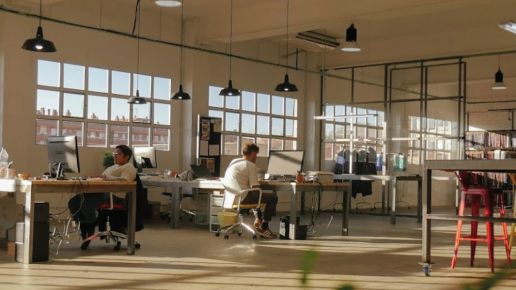
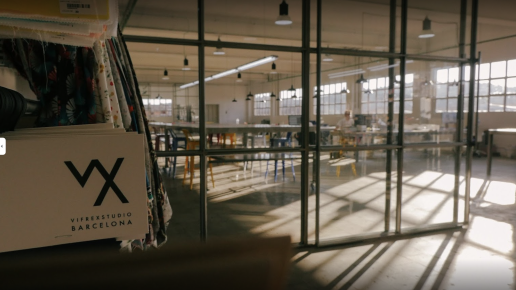
This might be also interesting for you
CONNEXXION – SAAT MUNICH
29. June 2023
SAAT bedeutet im Indischen „gemeinsam“ und im Deutschen „was aus gesätem Samen entsteht“. So ist die Mode von SAAT eine harmonische Verknüpfung verschiedener Faktoren, die stets Neues hervorbringt.
HOW DO WE PACKAGE PEOPLE?
27. June 2023
This is what fashion is all about right now: taking people on a journey through time to phases of our lives and theirs when we, and everyone around us, were so much more carefree than we are today.
THE SOURCE 2023 – Autumn.Winter 24/25 – Part I
22. June 2023
M. I. Industries is engaged in innovative manufacturing with a vertically-integrated supply chain that straddles from greige fabric to apparels, providing end to end solutions to trusted partners across the globe.
High-tech connection meets low-tech reconnection
20. June 2023
Simultaneously, they are eager to explore avenues for improving the customer journey, sustainability aspects, sourcing or design. It entails broadening their scope of responsibilities and possibilities.
The Textile Industry: What to Expect in the Next Five Years
13. June 2023
The focus will be reducing hazardous chemicals, water, and energy in textile production. The industry will place greater emphasis on circular production methods and using recycled materials.
Discover the latest trends from KEYHOUSE 2023
11. June 2023
On more than 1,000 square metres you will find trend-setting Smart Textiles, Future Fabrics and new technologies - be it in terms of sustainability, circular economy, digitalisation, traceability, technology or finishing for the Autumn.Winter 24/25 season.
EACH OTHER
6. June 2023
each other - we believe that it will become the decisive factor influencing the trends of the coming season: namely the importance of personal contact, exchange and being there for each other, of listening attentively and looking closely.
Fabrics Spring.Summer 24 VIII
30. May 2023
The new collectionfeatures colourful micro, geometrical designs onone side and organic, abstract shapes on the other.
DMI FASHION DAY LIVE in Munich
25. May 2023
FASHION DAYs - The date (July 17, 2023) and the location (MOC Munich) offer guests the opportunity to "kill two birds with one stone", namely, to visit MUNIC FABRIC START and the DMI FASHION DAY LIVE on the afternoon before.lappe zu schlagen“, nämlich die MUNIC FABRIC START zu besuchen und am Nachmittag davor den DMI FASHION DAY LIVE.
BLUEZONE DISCOVERY – Part III
23. May 2023
Ctrl+Z, fabricsare made from a pure blend of recycled cottonand polyester with regenerated cellulosic fibers:
The Material Revolution - Who is leading the charge?
In the past five years, groundbreaking science has been changing the clothing industry one experiment at a time. With a ravenous appetite for new fabrics, some great candidates have been castor bean-derived nylons, mushroom leather, and synthetic spider silks. Designed to correct some of the textile industry’s wrongs, new materials have been enticing the attention of some of the most prominent players in the fashion industry, which is an excellent thing.
Introducing Cutting Edge Atelier
As we enter a new material age, there has been an influx of fabric alternatives being researched and explored. So even though it may all seem pretty experimental right now, here are five companies making many of us believe that new materials will become the norm over traditional ones.
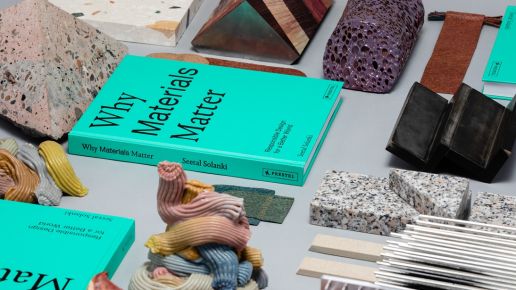
Picture credit:
Circular Systems
AlgiKnit
Is biology the future of fashion? Well, AlgiKnit seems to think so. The biomaterials company has been developing biomaterials that can play a vital role in the future of sustainable manufacturing.
By addressing the ecological damage caused by the fashion industry, AlgiKnit is making an impact by operating in a closed-loop product lifecycle that will bring sustainable bio-based textile alternatives to the footwear and apparel industries.
The biomaterials startup focuses on transforming the apparel ecosystem with rapidly renewable bio-based textiles. AlgiKnit has found a way of utilising materials with a significantly lower environmental footprint than conventional textiles. One of these materials is Kelp. Considered to be one of the fastest-growing organisms on earth – up to 10 times faster than bamboo. “Kelp is grown in aquatic farms around the world in coastal communities, often by fishermen and women, providing income during the fishing off-season,” states their site.
One of the benefits of Kelp, according to Fashion United is that it improves the environment by absorbing nutrients from agricultural and sewer run-off that can alter coastal settings. This recaptures nutrients for the next generation of biomaterials. Also, Algiknit’s biopolymer is entirely customisable.
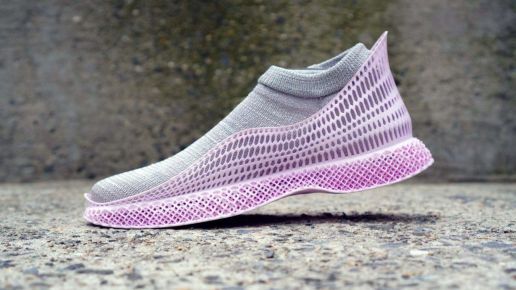
Picture credit: Algiknit

Picture credit: Algiknit
MyCoWorks
Founded by Philip Ross, Sophia Wang and Eddie Pavlu, the California startup MyCoWorks comprises a team of creative engineers, designers, and scientists. Their distinctive disciplines gave birth to a rapidly renewable natural resource called mycelium.
According to Insider.com, Mycelia are thread-like masses of fungi that grow underground. They run through almost every square inch of earth, delivering nutrients and allowing plants to “talk” to each other. MyCoWorks has innovatively used fungi to create a textile that performs like leather. On the mushroom-like material, Wang admitted to it being “a new thing in the world.”
So what does mycelium bring to the table? Well, MyCoWorks have presented mycelium as the solution to replace the resource-intensive product, leather. Relying on nature’s best tools, they have created a new kind of leather that can multiply from mycelium using a carbon-negative process. In addition, their custom-engineered material is sustainable, versatile, and animal-free. On MyCoWorks new leather, Dr Amanda Parkes, Chief Technology and Research at Manufacture NY, shared, “I believe we can solve all the world’s problems with mycelium biology”.
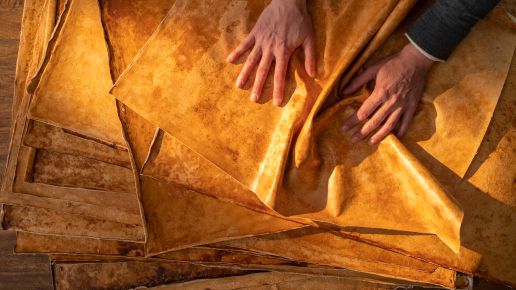
Picture credit: MyCoWorks
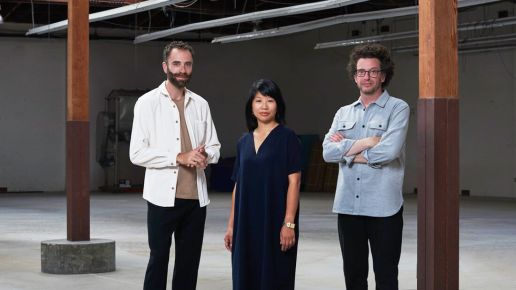
Picture credit: MyCoWorks
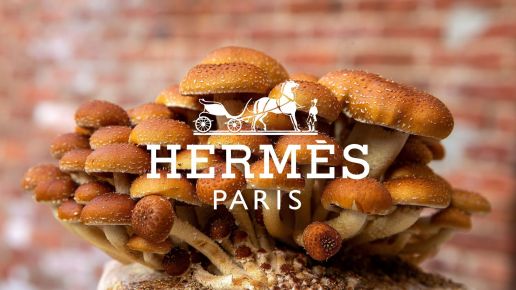
Picture credit: MyCoWorks
Desserto
Cactus vegan leather is nothing new. The material first came to our attention back in 2019. We wrote about how the two entrepreneurs, Adrián López Velarde and Marte Cázarez, developed and showcased their vegan leather material at the International Leather Fair Lineapelle 2019.
Made with cactus, the alternative to animal leather was heralded as a high resistance vegan cactus leather that would appeal to the fashion, interior and car industries.
Named Desserto, the cost-competitive material has been designed and developed to meet the most rigorous standards from the Aeronautic to the Fashion industries. That being said, not everyone has sung their praises. For example, Dr Ashley Holding and Paula Lorenz outed the Desserto material as partly vegan leather with cactus; the rest they described in a write-up was “undefined chemicals”. Although the founders have shared that the chemicals they use are non-toxic, it is not a truth revealed so openly by Desserto. Instead, the Mexican startup concentrated on the fact that their material was ‘PVC Free’ and did not contain a particular type of plastic.
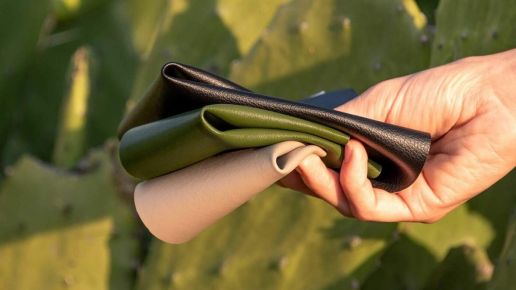
Picture credit: Desserto
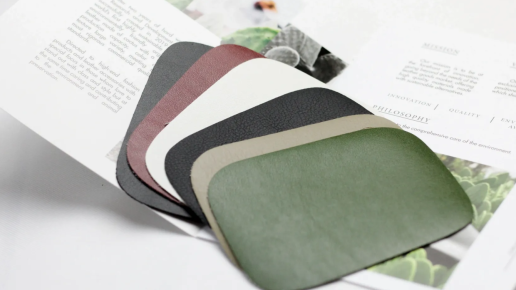
Picture credit: Desserto
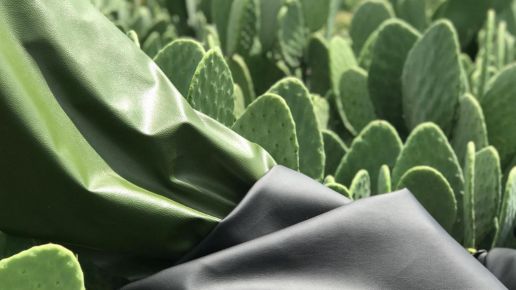
Picture credit: Desserto
Agraloop
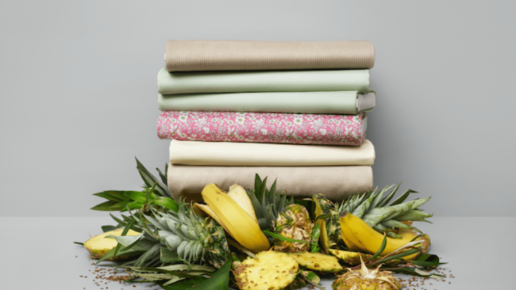
Picture credit: Agraloop
Agraloop has been busy transforming leftovers from food and medicine crops into scalable high-value natural fibre fashion products. The materials science company refines natural fibres from crops into a textile-grade fibre called Agraloop™ BioFibreTM.
“Our circular plus regenerative technologies provide systemic solutions for transforming waste into valuable fibre, yarn, and fabrics for the fashion industry,” states their website.
Mindfully sourced for circularity, Agraloop has developed a specialised wet processing technique; cellulose fibre from stems and leaves is purified into soft fibre bundles ready to spin into yarns. The Agraloop processes leftovers from various food and medicine crops, including oilseed hemp/flax, CBD hemp, banana, and pineapple.
Modern Meadow
Modern Meadow exists at the intersection of performance, scalable adoption and sustainability. The company began with an R&D initiative to develop a sustainable alternative to leather, which led to a breakthrough discovery of proteins as functional ingredients.
Harnessing the power of design, biology, and engineering, in 2017, Modern Meadow launched their prototype materials brand, ZOA. With the ability to impact a range of products across multiple industries, Modern Meadow state on their website: “Our experiments and exploration within ZOA led to the creation of Bio-Alloy™ and its application in a wide range of high-performing, low-waste bio fabricated materials, and our unique capabilities to create functional, animal-free proteins.”
Scaling by partnering with forward-thinking developers, manufacturers, and brands, Modern Meadow continues to educate industries on the possibilities of a biomaterial future.
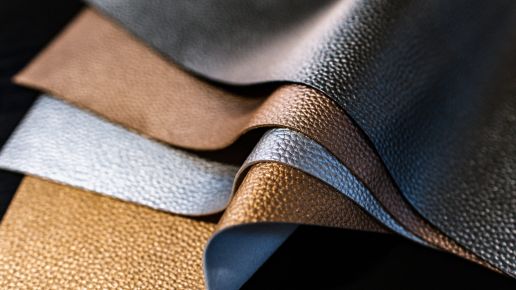
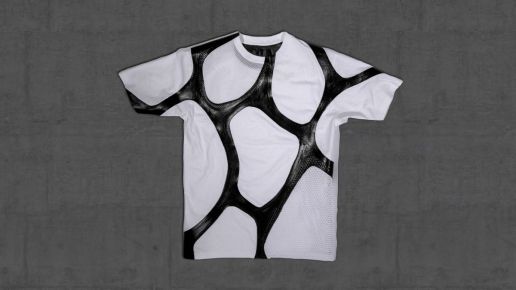
Picture credit:
Modern Meadow

About the author
Founding editor-in-chief of FashNerd.com, Muchaneta has worked in the fashion industry for over 14 years. She is currently one of the leading influencers speaking and writing about the merger of fashion with technology and wearable technology.
Muchaneta ten Napel | editor@fashnerd.com
———————————————————————–
Discover further industry-disrupting innovations at our upcoming shows:


